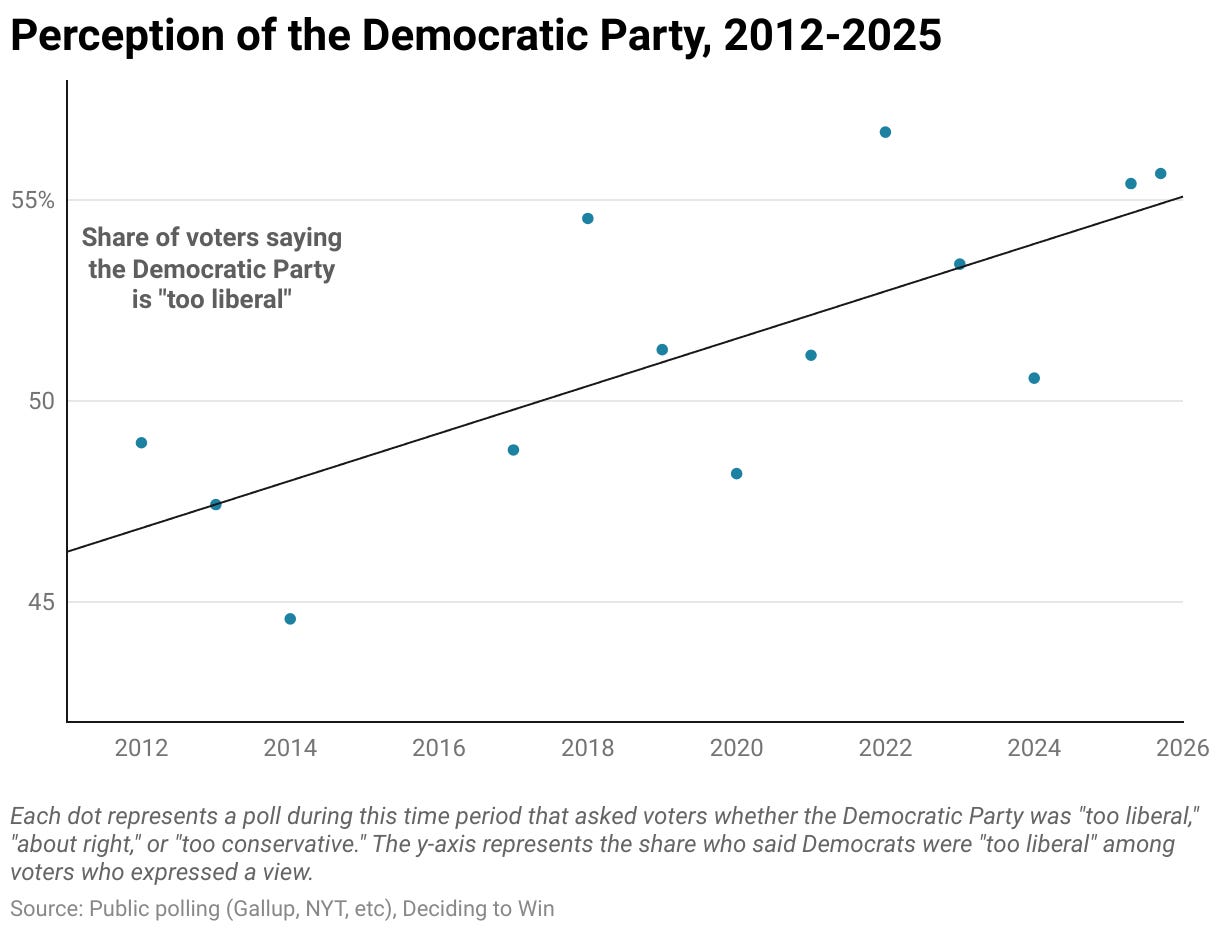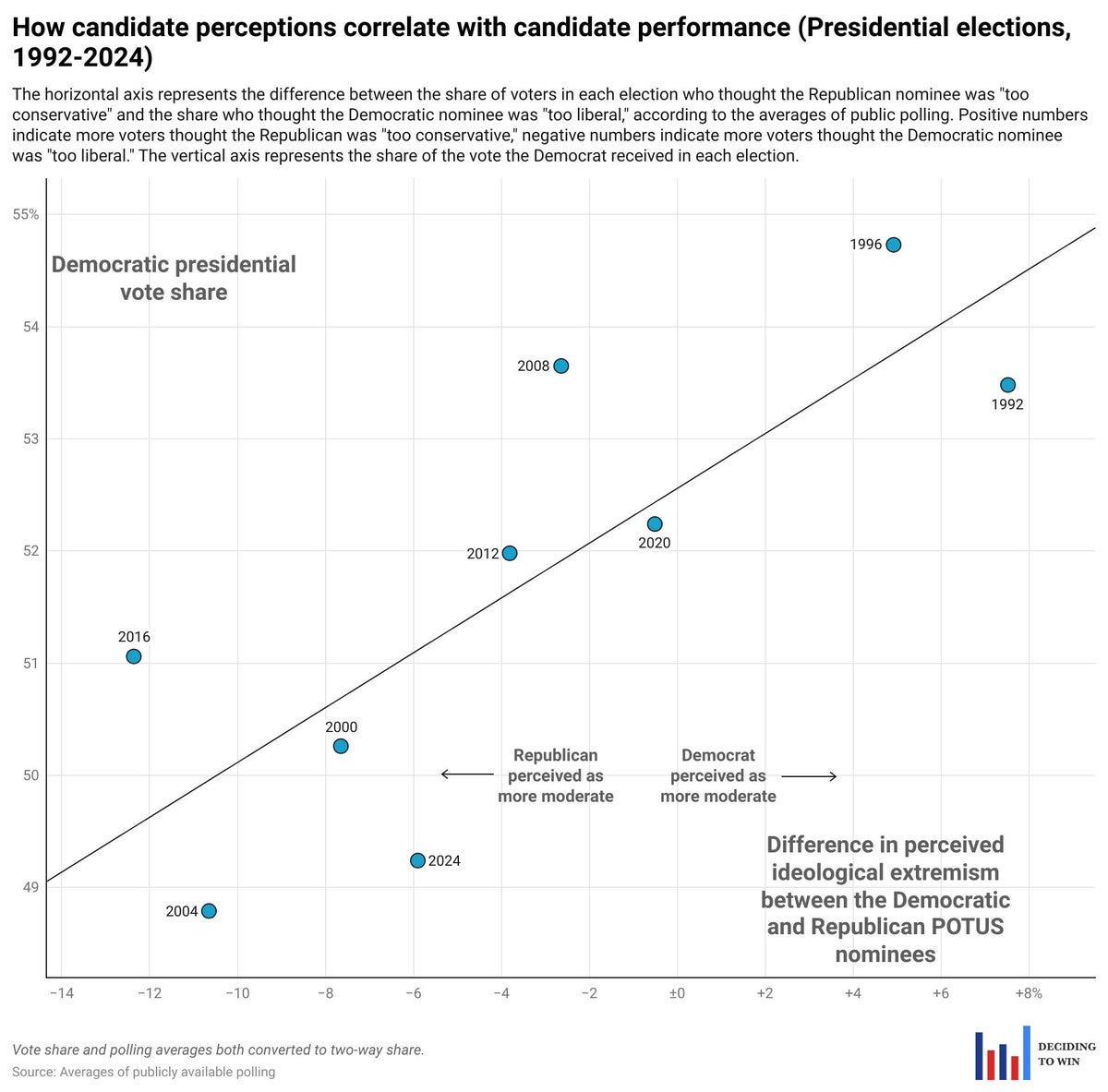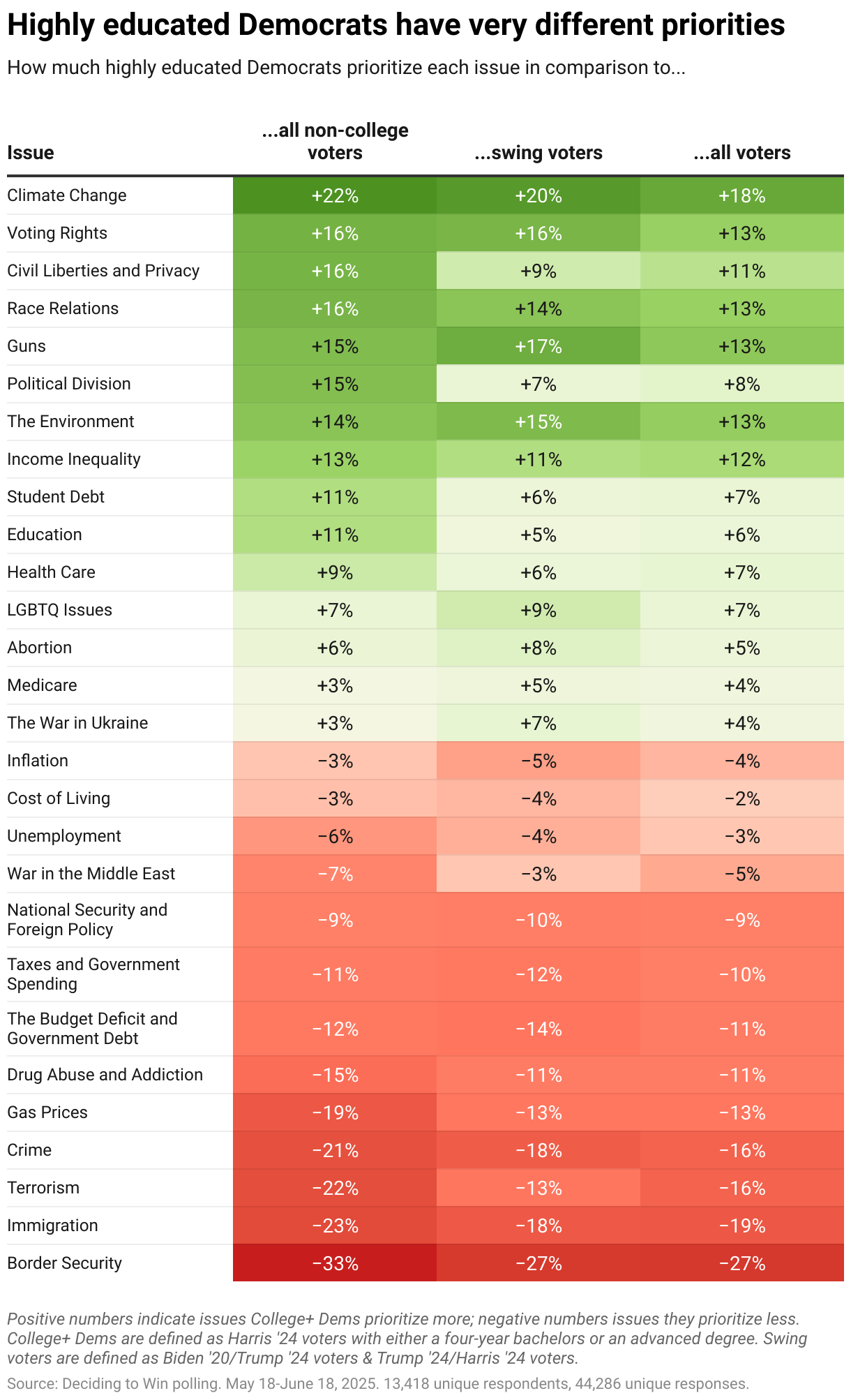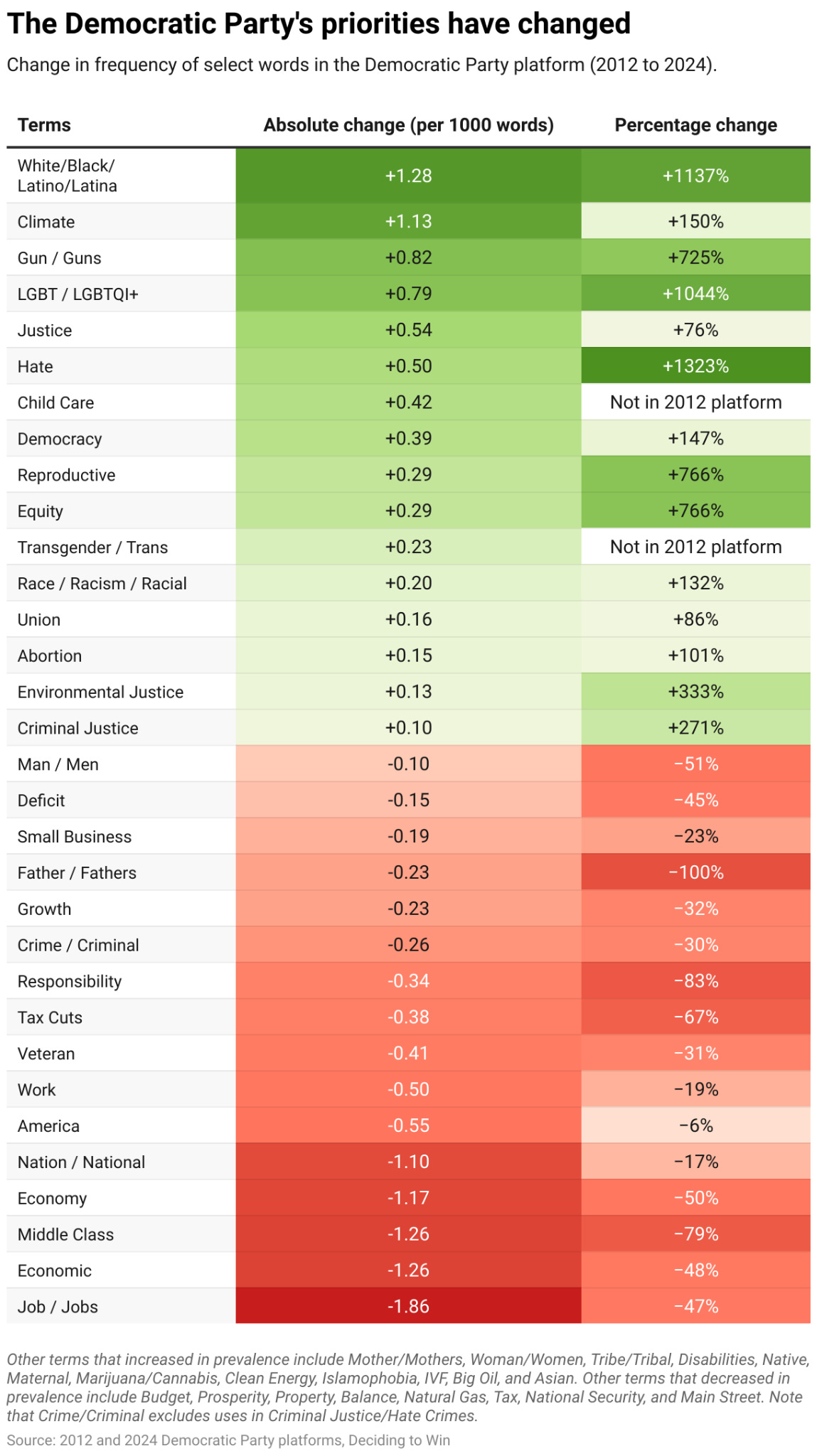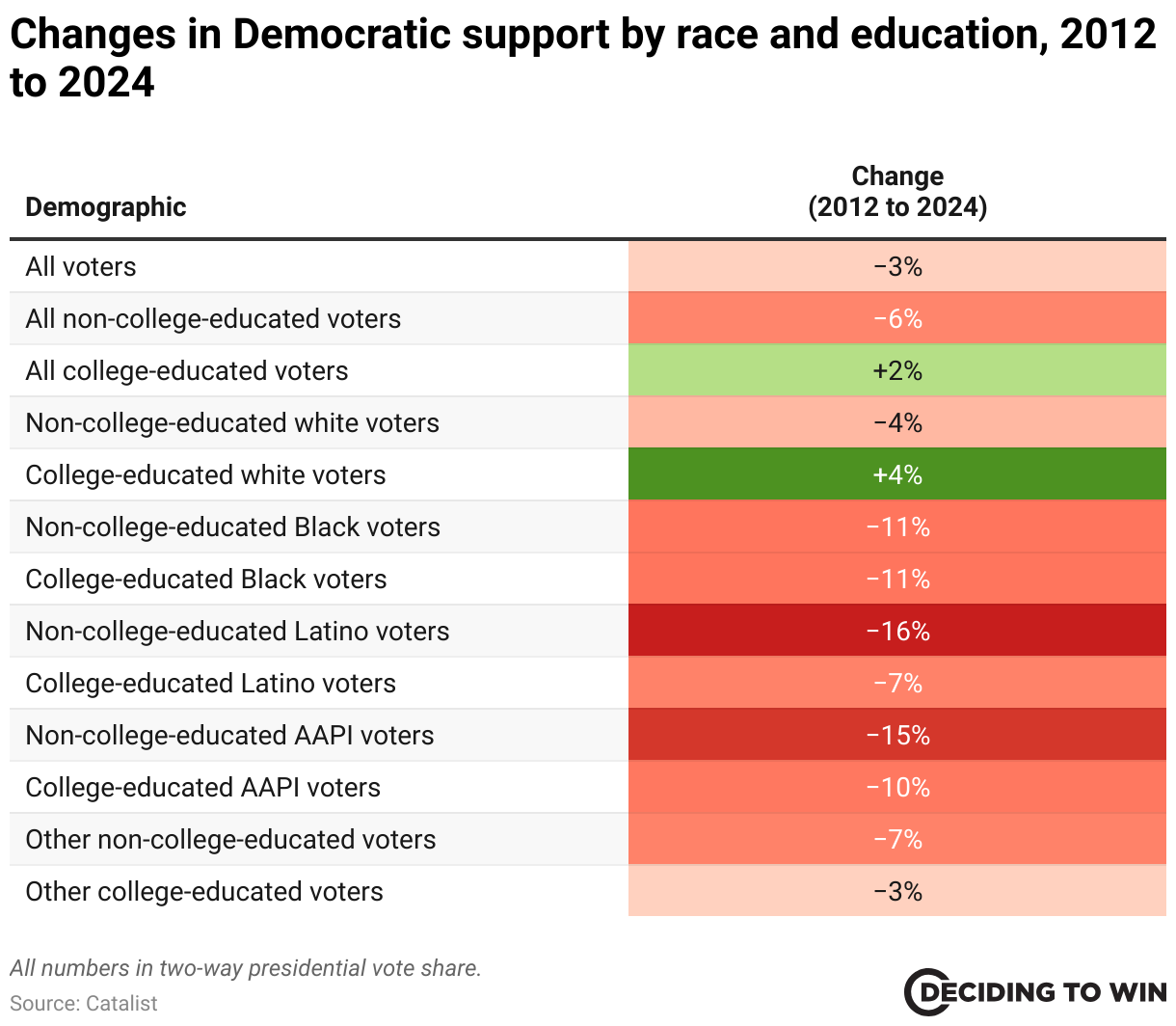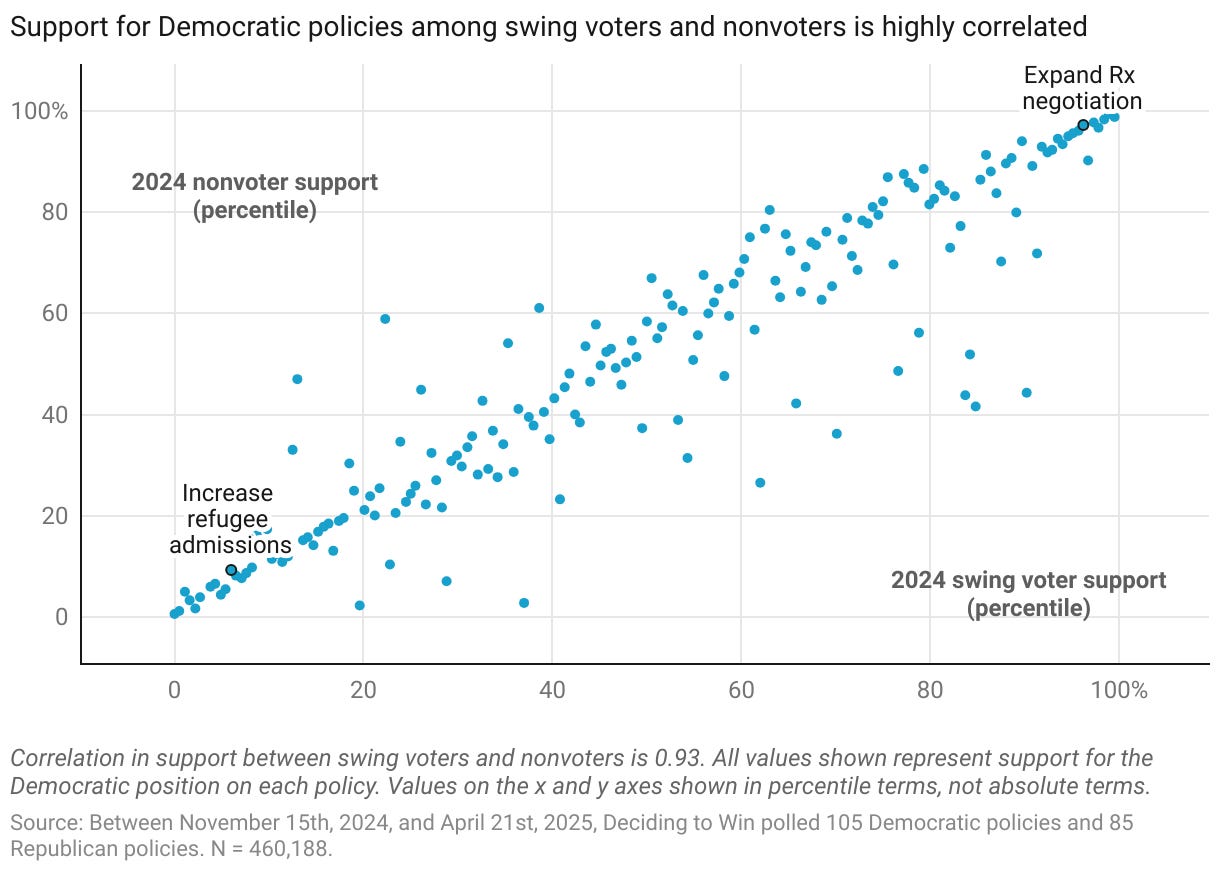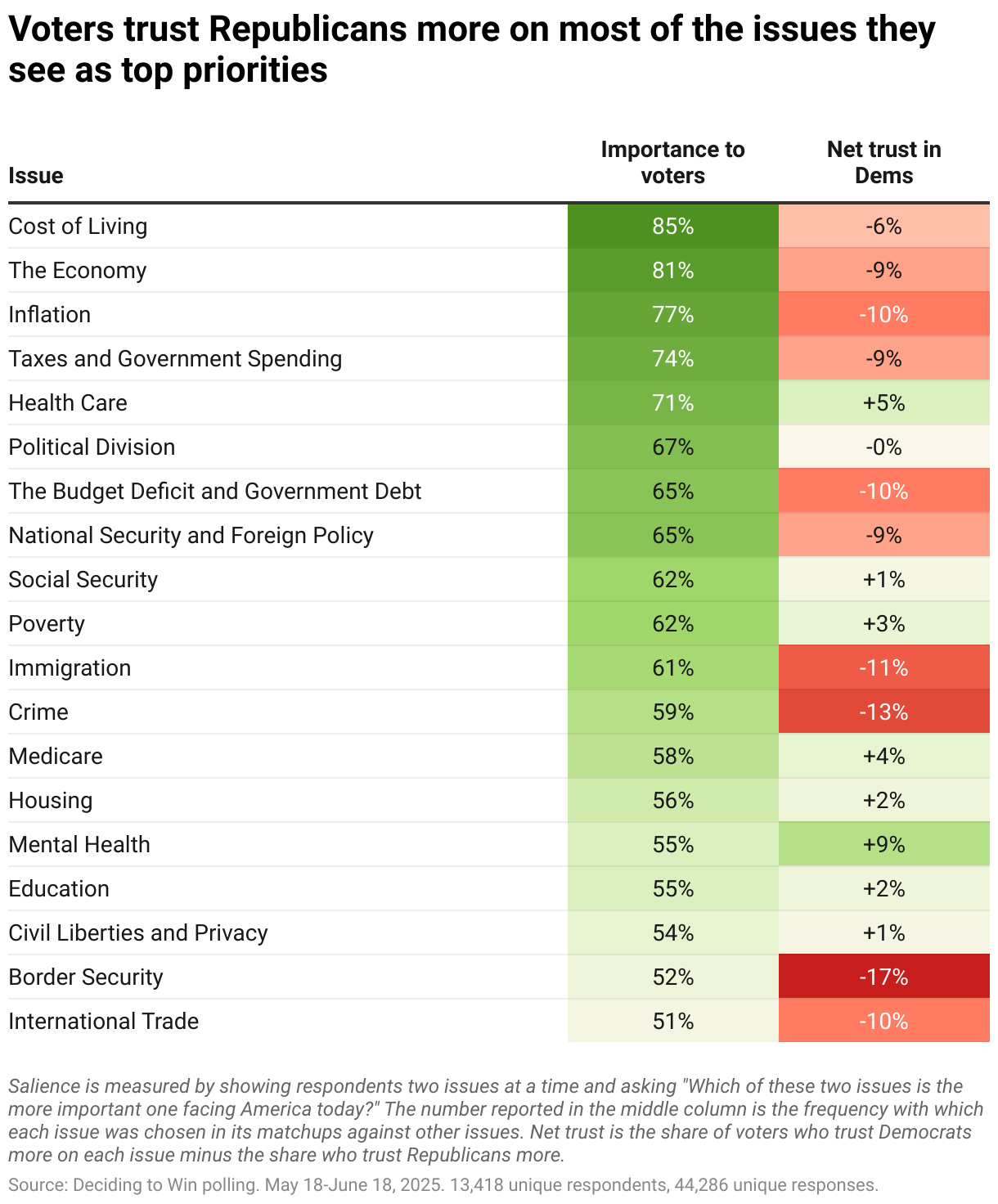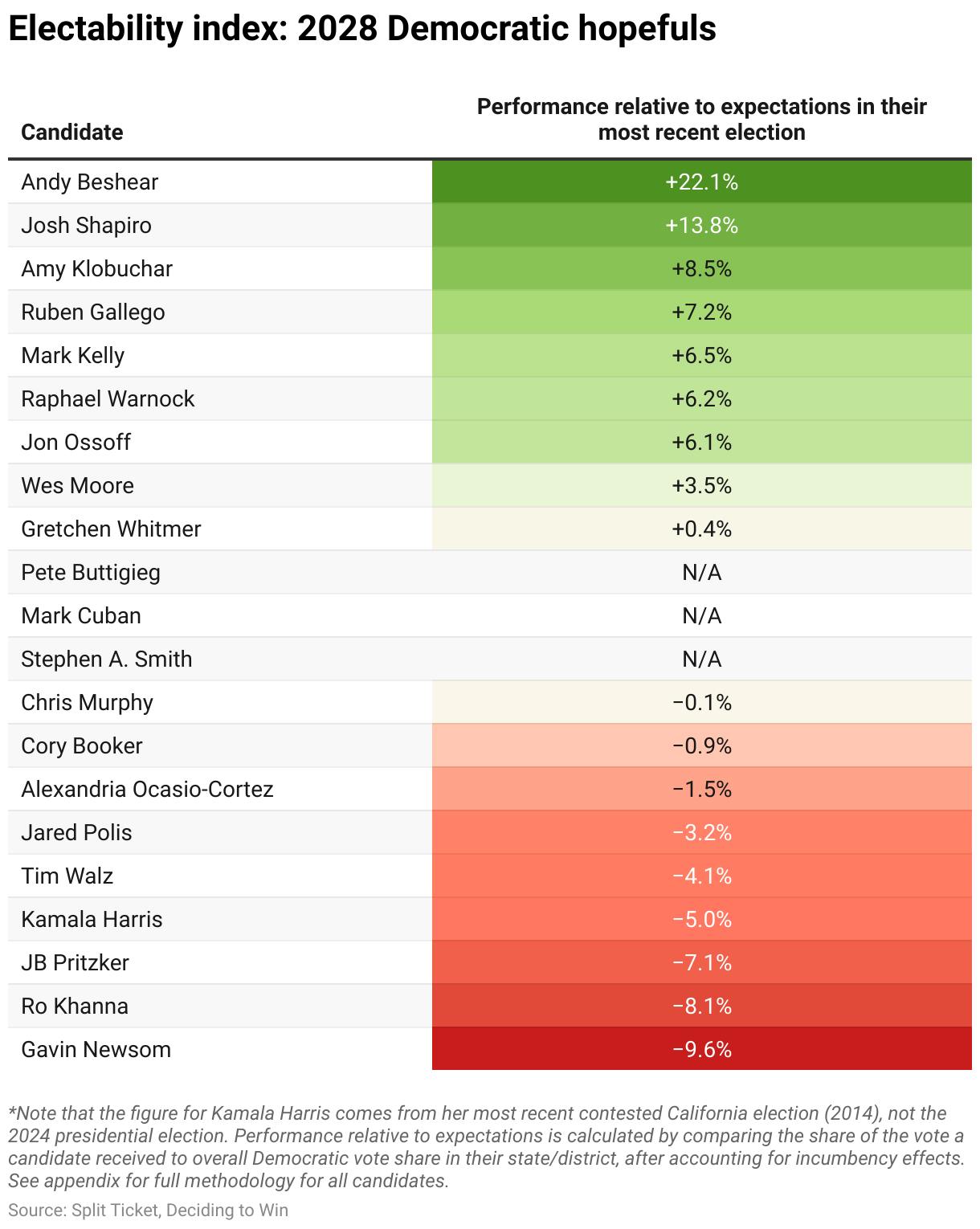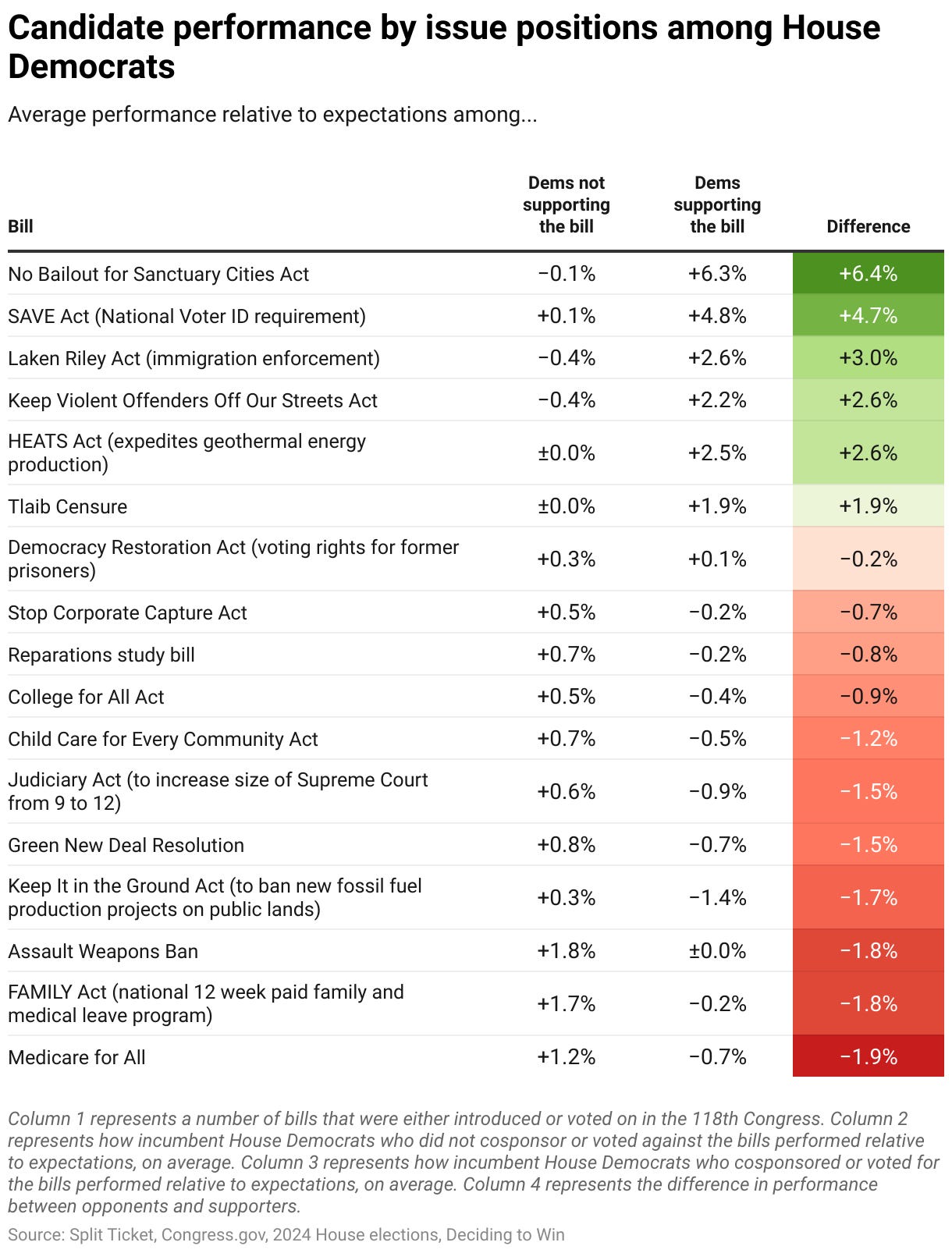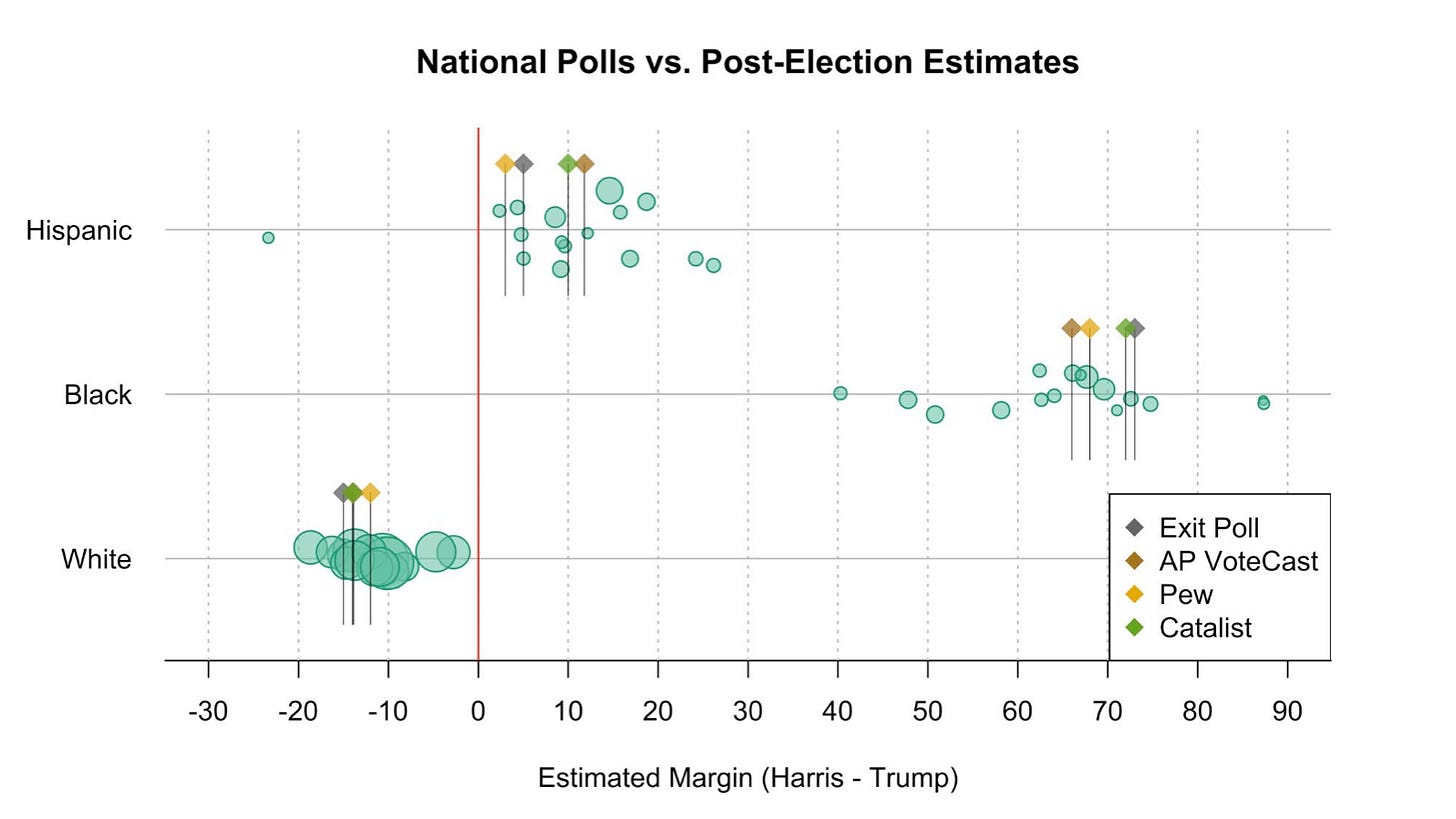Will Democrats decide to win?
2025 endgame, AAPOR's 2024 polling postmortem, how AI hurts productivity, cooperation with China, trends on moral disapproval, immigration as a crime issue, the price of electricity
No. 380 | October 31st, 2025
🫏 The top 10 charts in Deciding to Win
Welcome’s Deciding to Win report charting a common-sense centrist approach for Democrats came out this week. And I was happy to blurb it, writing, “If Democrats actually followed the guidance in Deciding to Win, it would make my job a lot harder. Luckily, they probably won’t.”
The report is rich and data-packed, something you should read even if you don’t share the authors’ goals. While the data likely won’t come as a surprise for the kind of person who reads this newsletter, compiling it all in one place has a way to refocus the debate. And at least for now, the report has succeeded in shifting the spotlight ever so slightly back to the long-term challenges facing the party and ever so slightly away from reflexive short-term Trump opposition.
Here are the 10 charts I found most eye-opening in the report.
#1: The share of voters rating the Democratic Party “too liberal” has steadily increased.
#2: When Democrats are perceived as more extreme, they lose
#3: Highly-educated Democrats have very different priorities than swing voters.
#4: Since 2012, woke language has skyrocketed in the Democratic platform while messages about national unity and kitchen table issues have steadily declined
#5: This stark language shift has coincided with major Democratic losses with working class and minority voters. The awokening didn’t help rally minority voters to the Democratic Party — it repelled them.
#6: Nonvoters aren’t hidden leftists waiting to be mobilized. Their priorities line up almost perfectly with swing voters.
#7: Voters now trust Republicans more on the most salient issues.
#8: The Democrats’ left-wing social media stars are electoral underperformers.
#9: The party’s likely 2028 frontrunners are also underperformers.
#10: Meanwhile, Democrats who worked across the aisle to support strict immigration enforcement, voter ID, and tough-on-crime measures overperformed.
🇺🇲 2025: Endgame
On Tuesday are the off-year elections in Virginia, New Jersey, and New York City. Democrats are favored to varying degrees in each. A sweep shouldn’t necessarily have Democrats bouncing off the walls for 2026: their job is to beat expectations. What would beating the spread mean?
A reasonable baseline would simply be a shift left from the 2024 election results — the classical measure of electoral over- or underperformance. I’m willing to spot them a couple of extra points in New Jersey, though, as Jack Ciattarelli has run a stronger campaign, has a history of overperformance, and off-year minority turnout tends to be uniquely bad in New Jersey.
A win is always a win, but for the night not to be considered something of a bust, Democrats should win VA-GOV by at least 6 points, NJ-GOV by 4 points, and win the Virginia AG race, where I think the money-line is close to even despite polls suggesting a Miyares lead.
Democrats significantly outperforming the polls in one of these states would also be a solid indicator for them. Republicans objectively did well in both states four years ago, but outperformed the final polling margin in New Jersey by 6 points despite losing. Four years earlier, Democrats did the same in Virginia, winning by 9 when the final polls suggested a victory by 3. And Virginia 2017 saw a reshaping of the electorate along Democratic lines — which they will need to reach into Trump districts in 2024:
Mamdani’s victory margin in New York has no bearing on the 2026 environment, so I’ll just point you to Zachary Donnini’s prediction of a solid Mamdani win just over 50%.
A piece by Ryan Jakubowski, a high school senior in Stamford, CT (close to my old neck of the woods) looks at gubernatorial races in three states — Virginia, Kansas, and Kentucky — measuring the impact of White House control and open-seat races. It’s much harder to win when your party controls the White House and you’re from the incumbent party running for the open seat.
📊 AAPOR’s post-2024 election polling postmortem
The American Association of Public Opinion Research is out with its 2024 polling postmortem. This wasn’t as highly anticipated as in past years because polls generally did well in 2024. But they still overstated Democratic margins by 2.7 points—an improvement from +4.6 in 2020 and +3.1 in 2016 but continuing a three-cycle streak of Democratic overstatement. Poll accuracy was highest in battleground states and lowest in infrequently polled states.
Here’s a ChatGPT summary of the 80-page report, along with some detail on a couple of points:
The Republican vote was underestimated in heavily Republican counties — a known but obscure issue I’m glad is finally getting attention.
Using recall vote weighting was better than not using it, but it needed to account for new voters (who leaned Trump) and better turnout in Republican areas.
On that latter point, this basically boils down to pollsters needing to dictate what the turnout will look like, rather than this emerging through the magic of random sampling (which doesn’t really exist anymore).
Think about it: If you can guess the right share of each side’s voters from the last election in the current electorate, correctly predict shifts in turnout, and have a good fix on the lean of nonvoters, you basically have the perfect poll. But it’ll be because you guessed the exact partisan makeup of the electorate rather than having the best sampling techniques. Making an educated guess on the partisan makeup of the electorate isn’t exactly like guessing the election result — but it’s pretty close. So, pollsters who do this are maybe one step removed from just guessing.
The sample itself can give some good directional signals (one party more “extremely” motivated to vote than the other, for example). But that won’t tell you exactly how many members of each party will vote, which is the information you actually need.
🤖 What if you think AI is helping you when it’s actually hurting?
Keep reading with a 7-day free trial
Subscribe to The Intersection to keep reading this post and get 7 days of free access to the full post archives.



